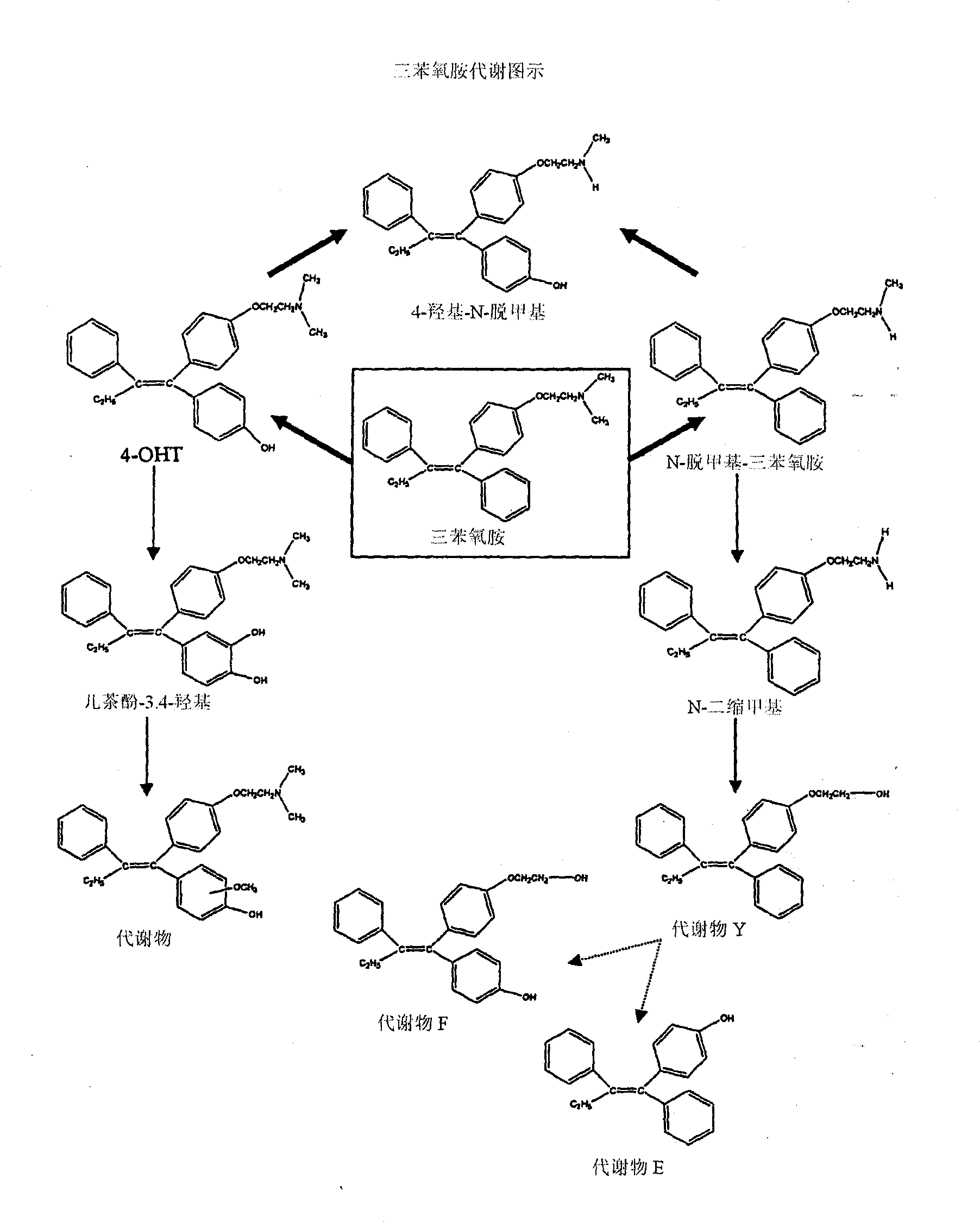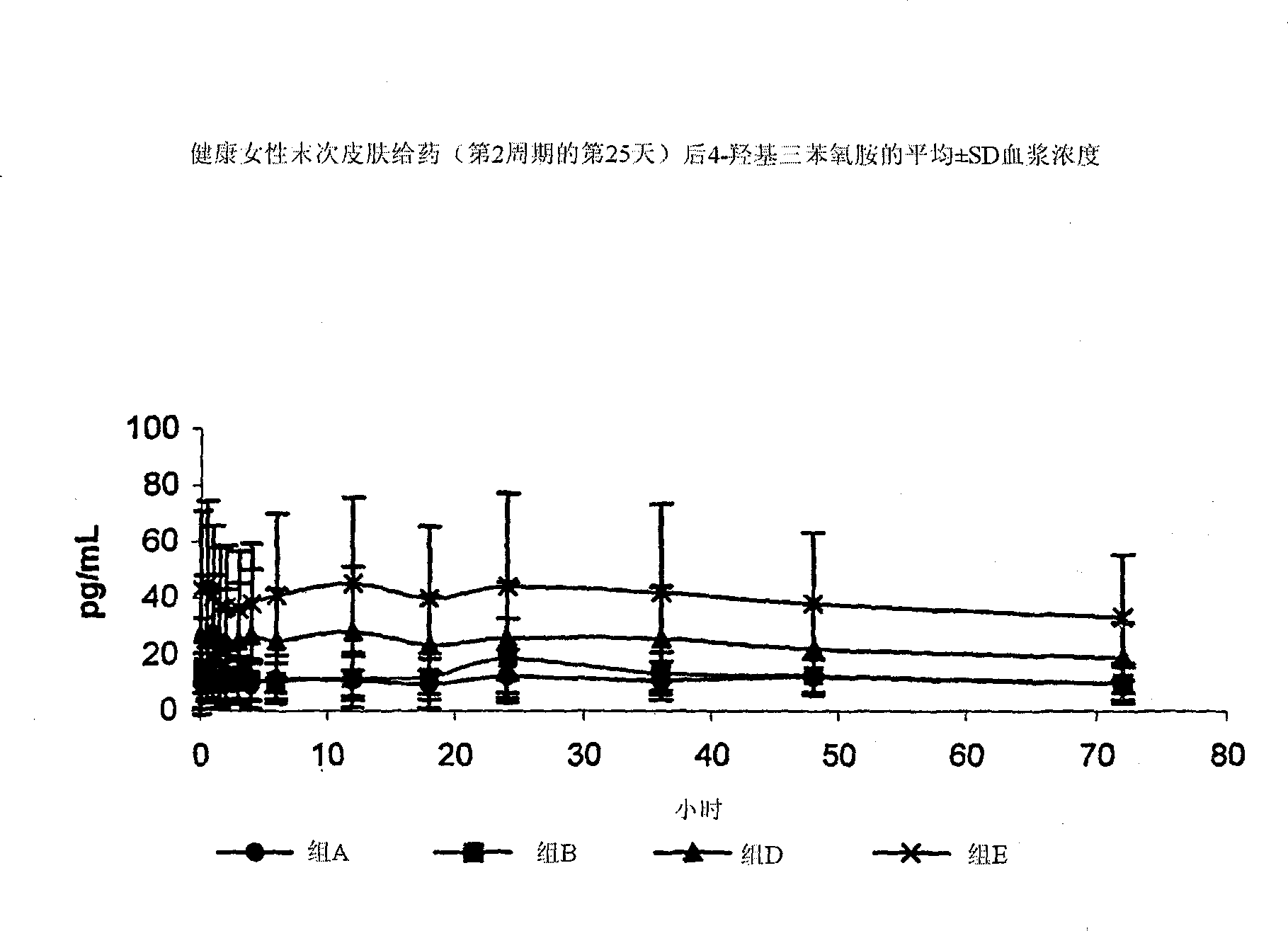Use of 4-hydroxy tamoxifen in treatment and prevention of benign breast disease
A technology for hydroxy tamoxifen and breast diseases, which can be applied in the direction of diseases, drug combinations, drug delivery, etc., and can solve problems such as increased risk of breast cancer
- Summary
- Abstract
- Description
- Claims
- Application Information
AI Technical Summary
Problems solved by technology
Method used
Image
Examples
Embodiment 1
[0058] Example 1: Verification of transdermal release of 4-hydroxy tamoxifen
[0059] [ 3 An alcohol solution of H]-4-hydroxy tamoxifen was applied directly to the breasts of four breast cancer patients. After surgery, both the resected tissue and the breast tissue surrounding the tumor are radiosuppressed (Kuttenn et al., 1985).
[0060] In a follow-up study, 9 of 12 patients scheduled for surgical resection of hormone-dependent breast cancer received Z-[ 3 H]-4-hydroxy tamoxifen (80μCi) treatment, 3 received Z-[ 3 Treatment with H]-tamoxifen (80 μCi) was used for comparison. [ 3 H]-labeled drug is applied directly to the patient's diseased breast. Three areas of breast tissue—the tumor, the tissue immediately surrounding the tumor, and normal tissue—were excised and immediately frozen in liquid nitrogen. In addition, plasma and urine samples were obtained at predetermined intervals and frozen for analysis.
[0061] Table 2 shows the analysis results. 4-Hydroxy tamoxi...
Embodiment 2
[0070] Example 2: Pharmacokinetic and pharmacodynamic verification of transdermally administered 4-hydroxy tamoxifen compared to oral administration of 20 mg tamoxifen
[0071] This study compared tissue and plasma concentrations of 4-hydroxy tamoxifen after transdermal administration of a hydroalcoholic gel to those after oral tamoxifen (Pujol, 1995).
[0072] Thirty-one patients scheduled for breast cancer surgery were randomly assigned to 1 of 5 groups. As listed in Table 3, they were treated with either oral tamoxifen or transdermal 4-hydroxy tamoxifen. Treatment was performed daily for 3-4 weeks before surgery. The study evaluated three different doses of 4-hydroxy tamoxifen (0.5, 1, or 2 mg / day) and two-area application (applied to both breasts or to a large skin surface including arms, forearms, and shoulders). ). A group of patients received oral tamoxifen ( ) 20mg / day (10mg each time, twice a day) treatment.
[0073] Table 3: Treatment Groups
[0074]
[007...
Embodiment 3
[0092] Example 3: Tolerance and pharmacokinetic verification of transdermal administration of 4-hydroxy tamoxifen to healthy women
[0093] This study demonstrates the tolerability and pharmacokinetics of topically applied 4-hydroxytamoxifen gel in healthy premenopausal women aged 18-45 years. Each participant applied the gel on each day of two menstrual cycles.
PUM
 Login to View More
Login to View More Abstract
Description
Claims
Application Information
 Login to View More
Login to View More - R&D
- Intellectual Property
- Life Sciences
- Materials
- Tech Scout
- Unparalleled Data Quality
- Higher Quality Content
- 60% Fewer Hallucinations
Browse by: Latest US Patents, China's latest patents, Technical Efficacy Thesaurus, Application Domain, Technology Topic, Popular Technical Reports.
© 2025 PatSnap. All rights reserved.Legal|Privacy policy|Modern Slavery Act Transparency Statement|Sitemap|About US| Contact US: help@patsnap.com



